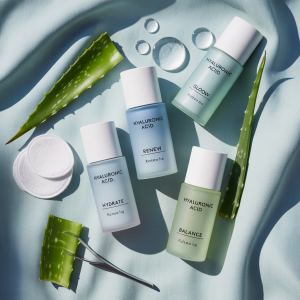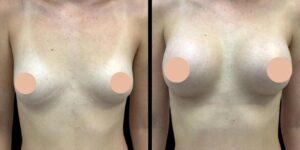In the world of wound care and regenerative medicine, amniotic skin grafts are quickly gaining attention. These natural grafts, made from the innermost layer of the placenta, are helping doctors treat wounds more effectively than ever before. As research grows, so does the promise of this innovative treatment. This article will explain what amniotic skin grafts are, how they work, and why they matter in the future of healing.
What Is an Amniotic Skin Graft?
An amniotic skin graft is a product made from the amniotic membrane. This membrane comes from the placenta, which is usually thrown away after childbirth. But scientists have found that the amniotic layer has powerful healing properties. It contains growth factors, proteins, and tissue structures that help the body repair wounds.
Before use, the tissue is carefully processed and sterilized. The donor’s cells are removed to prevent rejection, but the healing elements remain. The result is a safe and effective treatment for wounds, burns, and surgical injuries.
How It Works in the Body
When an amniotic skin graft is placed on a wound, it acts as a temporary layer of skin. It protects the area from infection and helps the body heal itself. The graft keeps the wound moist, which is key to faster recovery. Dry wounds heal slowly, while moist ones allow skin cells to move and grow more easily.
The graft also delivers growth factors directly to the wound. These proteins send signals to the body to reduce inflammation, build new blood vessels, and grow healthy tissue. Because of these effects, wounds often heal faster, with less pain and fewer complications.
What Kinds of Wounds Can It Treat?
Amniotic skin grafts are used for a wide range of conditions. Doctors apply them to:
- Diabetic foot ulcers
- Venous leg ulcers
- Pressure sores
- Burns
- Surgical incisions
- Trauma wounds
These types of wounds are often slow to heal, especially in people with diabetes or poor circulation. For them, amniotic grafts can be a game-changer.
Benefits of Amniotic Skin Grafts
There are several key benefits to using these grafts:
- Faster healing: Because of the natural growth factors, wounds heal quicker.
- Less pain: The graft can reduce inflammation, which helps lower pain levels.
- Lower infection risk: The membrane has natural antibacterial properties.
- Minimal scarring: Grafts support better tissue growth and smoother skin.
- No donor site needed: Traditional skin grafts require removing skin from another part of the patient’s body. Amniotic grafts avoid this.
Why They’re a Breakthrough in Regenerative Medicine
Regenerative medicine focuses on helping the body heal itself using natural or lab-made materials. Amniotic skin grafts are a perfect example. They use birth tissue that would otherwise be thrown away and turn it into a life-changing tool.
What makes these grafts especially exciting is their ability to work with the body. Instead of replacing damaged skin, they support the body as it grows new, healthy tissue. This approach not only speeds up healing but also improves the quality of the repaired skin.
Safe and Ethical Sourcing
One concern patients may have is where the grafts come from. All amniotic skin grafts come from donated placentas after healthy births. Donors are screened, and the tissue is processed in highly regulated labs. There are no live cells in the final product, which makes rejection rare. Plus, the donation is completely voluntary and harmless to the baby and mother.
How They’re Applied
Applying an amniotic skin graft is a simple, non-surgical procedure. Here’s how it typically works:
- The wound is cleaned and prepared.
- The graft is placed directly on the wound.
- A protective covering is added to hold the graft in place.
The graft may dissolve over time or be absorbed into the new tissue. Some wounds may need more than one application. The whole process can often be done in an outpatient clinic with no hospital stay required.
Comparing Amniotic Grafts to Other Treatments
In the past, doctors used skin from the patient or synthetic dressings to help wounds heal. These treatments can still be useful, but they come with drawbacks. Donor skin can cause pain and scarring at the harvest site. Synthetic materials may not blend well with human tissue.
Amniotic skin grafts offer a natural and effective option. They are biologically active but don’t require cutting into healthy skin. That means fewer complications and quicker recovery. They’re especially valuable in cases where other methods have failed.
Challenges and Considerations
Even though the benefits are clear, there are some challenges. Amniotic grafts can be expensive, and not all insurance plans cover them. They also require careful storage and handling to stay effective. Some patients may need multiple applications, which adds to the cost and effort.
Still, for many patients, the results are worth it. Doctors continue to study and refine these treatments to make them more accessible and affordable.
Future Directions in Wound Care
As more is learned about the healing powers of amniotic tissue, new products are being developed. Some combine amniotic tissue with other regenerative tools, like stem cells or biologics. Others are designed for use in other parts of the body, such as the eyes, joints, or organs.
The goal is to take what nature already provides and use it in smarter, more targeted ways. In the future, we might see amniotic skin grafts as a standard option for all kinds of wounds, both simple and complex.
Final Thoughts
Amniotic skin grafts represent a major step forward in wound care and regenerative medicine. They offer faster healing, less pain, and fewer complications for patients with hard-to-treat wounds. As more people and providers learn about these grafts, their use is likely to grow.
This simple, natural product is helping medicine shift from just treating symptoms to actually supporting the body’s own healing process. That makes it one of the most promising tools in modern healthcare.






